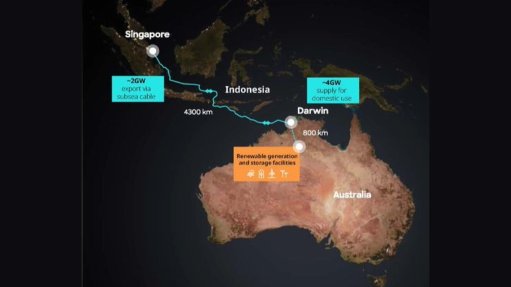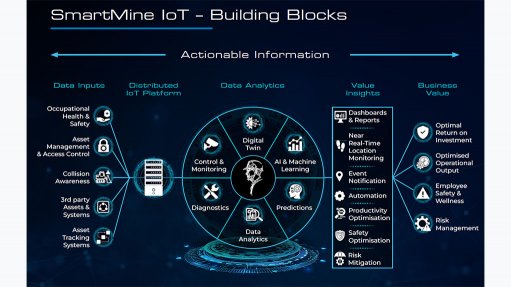Covid-19 is driving an important shift in building-design trends
This article has been supplied.
The Covid-19 pandemic is driving important shifts in designing spaces within buildings. This encompasses the provision of fresh air and ventilation, increased monitoring of the internal environment, maintenance and cleaning activities and different procedures for entering a building and using its facilities.
For example, designing office fit-outs now involves increased distance between desks, installing protective screens, improved wayfinding to limit occupant and visitor interaction in circulation areas and automation of internal doors to limit surface contact. Proper outdoor air distribution with increased ventilation rates is also required to reduce pathogen build-up in the air.
In terms of infrastructure, many leading global cities are changing the way public transport operates by making a concerted effort to increase alternative mobility – that is, non-motorised transport, including cycling lanes and bicycles, e-scooters and pedestrianising the inner city.
“All of these measures are being taken to ensure the health and well-being of occupants and visitors of buildings and communities at large,” comments Yovka Raytcheva-Schaap, Associate, Environmentally Sustainable Design (ESD) Consulting & Project Management at Zutari.
Essentially, when designing new buildings, project teams should have a deeper appreciation of the contextual characteristics of sites, the location and climatic conditions, the availability or lack of finite resources and the ecological and social make-up of neighbourhoods. Thus the design development can be fully integrated with the organic offering of the sites.
In addition, passive design must be fully explored and implemented as a first step to reduce dependency on utilities, to make real estate more self-sufficient and resilient and to approach net zero performance.
The lockdown imposed due to the Covid-19 pandemic has not only reduced air and car travel, but has resulted in many people working from home thanks to the latest technologies for digitising business and operational processes. Pollution and greenhouse gas emissions have subsequently declined as people now fly and drive less.
“In returning to a ‘new normal’ post Covid-19 world, we must be more appreciative of such alternative ways of interaction, and be more caring towards each other and the environment we live in. Our efforts towards a more sustainable future must be renewed and intensified. As we rebuild those parts of the economy that have been negatively affected, or introduce new industries, it is our responsibility to shape a more sustainable future,” highlights Raytcheva-Schaap.
It is the government’s responsibility, however, to lead the shift towards a decarbonised economy and more inclusive communities. In this regard, the first step would be to remove the impediments confronting the private sector in producing energy from sources other than fossil fuels.
South Africa’s geographic location is such that a much higher proportion of the national energy mix could be attributed to renewable sources. However, the legal and regulatory framework, as well as the government’s procurement policies, need to change to enable such a shift.
In addition, the government should incentivise local capacity and production in the sustainable environment that lead to decarbonising the economy, while creating jobs and uplifting communities. “The government could also set an example by taking a leadership role to implement energy, water and waste -reducing strategies for its buildings and infrastructure,” concludes Raytcheva-Schaap.
Comments
Press Office
Announcements
What's On
Subscribe to improve your user experience...
Option 1 (equivalent of R125 a month):
Receive a weekly copy of Creamer Media's Engineering News & Mining Weekly magazine
(print copy for those in South Africa and e-magazine for those outside of South Africa)
Receive daily email newsletters
Access to full search results
Access archive of magazine back copies
Access to Projects in Progress
Access to ONE Research Report of your choice in PDF format
Option 2 (equivalent of R375 a month):
All benefits from Option 1
PLUS
Access to Creamer Media's Research Channel Africa for ALL Research Reports, in PDF format, on various industrial and mining sectors
including Electricity; Water; Energy Transition; Hydrogen; Roads, Rail and Ports; Coal; Gold; Platinum; Battery Metals; etc.
Already a subscriber?
Forgotten your password?
Receive weekly copy of Creamer Media's Engineering News & Mining Weekly magazine (print copy for those in South Africa and e-magazine for those outside of South Africa)
➕
Recieve daily email newsletters
➕
Access to full search results
➕
Access archive of magazine back copies
➕
Access to Projects in Progress
➕
Access to ONE Research Report of your choice in PDF format
RESEARCH CHANNEL AFRICA
R4500 (equivalent of R375 a month)
SUBSCRIBEAll benefits from Option 1
➕
Access to Creamer Media's Research Channel Africa for ALL Research Reports on various industrial and mining sectors, in PDF format, including on:
Electricity
➕
Water
➕
Energy Transition
➕
Hydrogen
➕
Roads, Rail and Ports
➕
Coal
➕
Gold
➕
Platinum
➕
Battery Metals
➕
etc.
Receive all benefits from Option 1 or Option 2 delivered to numerous people at your company
➕
Multiple User names and Passwords for simultaneous log-ins
➕
Intranet integration access to all in your organisation

















